Svein Tore Holsether: Europe needs ‘green’ fertiliser as Putin weaponises food
Norway’s Yara International demerged from Norsk Hydro in 2004 and has become one of the world’s largest producers of nitrogen-based mineral fertilisers. But its chief executive, Svein Tore Holsether, has been warning about problems with supply — and the industry’s greenhouse gas emissions — for many years.
Even before Russia’s invasion of Ukraine last year, global fertiliser supplies were being stretched by Covid shutdowns, labour shortages, Chinese consumption and general price volatility.
Now, Holsether says the conflict is enabling Russian president Vladimir Putin to “weaponise” food, in the same way that he has weaponised gas supplies. But, here, he tells the FT’s Moral Money editor Simon Mundy how hydrogen made from renewable energy — along with US-style tax incentives — can offer a solution to these problems.
Simon Mundy: Why are fertiliser and food so central to tackling climate change?
Svein Tore Holsether: Thirty per cent of greenhouse gas emissions come from agriculture and food. So if you don’t fix food, we’re not going to be able to deliver on the Paris Agreement. And that’s something close to the heart for our company, as well as me as CEO.
Climate Exchange
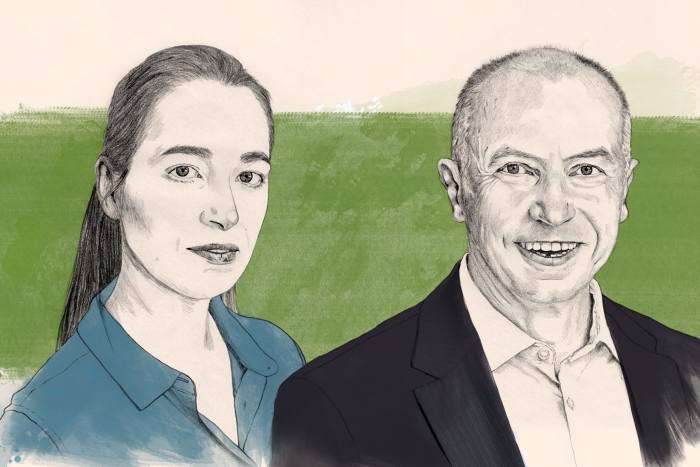
Following the success of our monthly Economists Exchange and Tech Exchange dialogues, the FT has launched Climate Exchange: conversations between FT reporters and the business leaders, innovators and top academics in the fields of sustainability, energy and the environment. The dialogues are in-depth and detailed, focusing on the challenges of tackling climate and changing our energy mix.
It was really a game-changer to be in Paris in 2015 — it was just three months into my time as CEO in the company. The board gave me a set of expectations about what we should focus on in our strategy, and I went to Paris together with the Norwegian Ministry of Foreign Affairs — there was sort of a group that came together.
SM: So this is the Paris COP . . .
STH: Yes, Paris COP . . . What I saw there really made a huge impact: the demonstrations, the intensity, the youth engagement . . . So I went back to the board after having been in Paris and said: “We have to think completely differently around the environment and food and our role in driving that.”
So that was the kick-off of a really long year to change everything: from our mission, our vision, our values and also our strategy . . . building on the sustainable development goals.
And it started with our purpose: why do we exist as a company? We took that back to the very start of our company, about 118 years ago now, 1905, when Europe was facing famine. Our founder, [Kristian] Birkeland, he was the one that came up with the breakthrough technology of getting nitrogen out of the air and turning it into fertiliser, which helped farming productivity.
So that’s the start. Today, half of the world gets food because of fertiliser so it’s an important product but one that also has an impact on emissions.
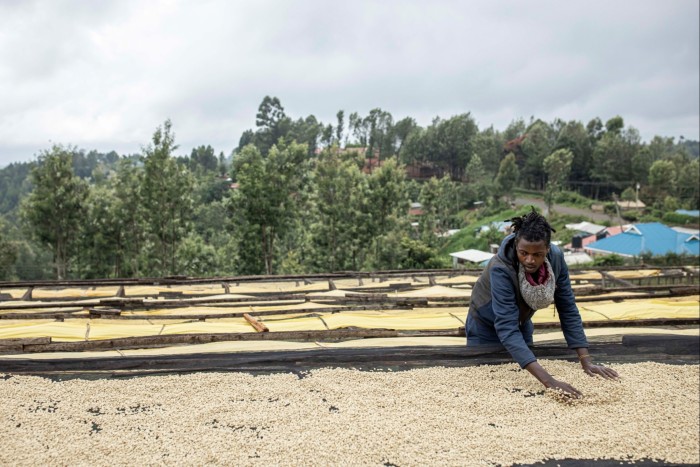
We ended up with our mission being to responsibly feed the world and protect the planet. So it’s about the duality of providing enough food for everyone in the population, but at the same time doing that [in an] environmentally friendly [way]. So that was the start of the journey on the sustainability side for us, building on the legacy where we have reduced our emissions significantly: [by] 50 per cent compared to 2005.
SM: Emissions from your operations?
STH: Yes. We’ve taken all the low-hanging fruit; now it’s about the next step — and that’s changing technologies, whether it’s carbon capture and storage or moving to green hydrogen. And that is a journey that we cannot do alone. We need to do that with partners . . . through value-chain partnerships — so, looking at the totality of food production, all the way to the consumers.
We’re working with governments to have incentives in place as well, so that, if there is no first-mover advantage, [we] at least try to avoid the first-mover disadvantage in this field.
SM: On that question of eliminating first-mover disadvantage, what would you like to see from governments?
STH: Now that it’s become clear that the Inflation Reduction Act (IRA) in the US is facilitating a very rapid green transition, I think it’s important in Europe that we just copy it. Unless we pick up speed in Europe, industries are going to lose out.
We are already very much aware of the energy disadvantage that we have in Europe right now because of the war. But if on top of that we don’t have the same incentives to drive the green transition, we’re missing a tremendous business opportunity as well. European businesses were in the lead and in the best position to rapidly make this transition. Now, we see that the US is going to leapfrog us.
SM: So, on the food and fertiliser side, were there particular provisions in the IRA that really struck you?
STH: For us, hydrogen. In order to get nitrogen out of the air, you need hydrogen — and, today, we get that from natural gas. But you can also get [green hydrogen] from water through electrolysers. And the IRA has very specific provisions for incentivising the production of green hydrogen that go straight to the core of what we’re doing. It also has provisions for carbon capture and storage. What we’re doing in the Netherlands would have qualified for significant incentives in the US. But, in Europe, it doesn’t.
SM: What are you doing in the Netherlands?
STH: We are producing fertiliser in the Netherlands with carbon capture and storage. That’s the world’s first cross-border carbon capture and storage programme. It’s Yara’s largest fertiliser site, it is one of the largest emissions points in the Netherlands. And what we’re doing is using our technology to capture the carbon, liquefy it, put it on a ship, and then go to the North Sea, where — through a co-operation between Shell, Total and Equinor — they have storage of CO₂.
That’s something that we are doing commercially. But, in the US, they’ve done the same thing but have a significant tax credit as a result of it.
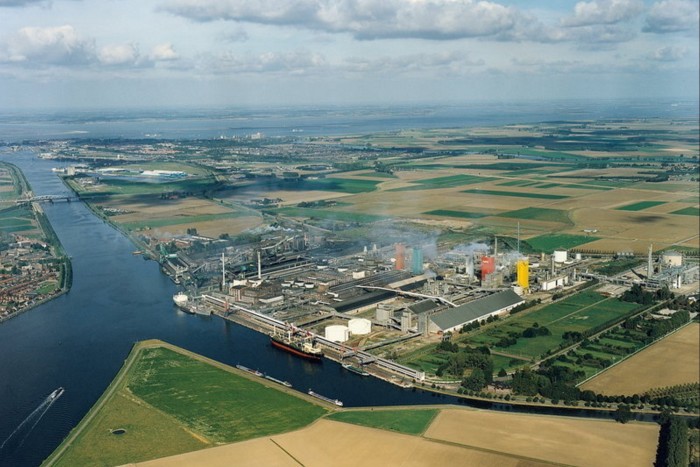
SM: You are still doing this project even though there is no tax credit. But would you say that there will be less activity in this space in Europe because of this lesser support?
STH: Yes, absolutely — because these sites are also export sites. And how is it possible for Europe to compete with the US when they have an income and we have an expense and we have to ship the product to South America? These sites are dependent on being able to flex between northern and southern hemispheres so you keep [them] running all year long and then you export to the south.
But the energy disadvantage and the incentive disadvantage are of a magnitude that really makes me worry about the future viability of this kind of production in Europe. That’s something we need to keep in mind in Europe: do we really want to risk our own fuel sovereignty and become dependent on other regions? We’ve seen the impact of exporting our energy production — like we did in connecting European infrastructure to Russia for cheap energy.
That worked well until it didn’t work anymore. Now, we pay the price of not being prepared. And we need to be very aware that, if you’re doing the same thing on food and fertiliser — delegating that to the other parts of the world — we could be in a very challenging position where we’re at risk of not having access to a product that represents half of all food production.
SM: To play devil’s advocate, someone might say: “OK, so you’re not getting as much support to go down these new green routes, but you’re still producing lots of fertiliser so what’s the problem?” What would be your response to that?
STH: Yes, it’s less of a problem for Yara because we are international. So we have a global network, we’re bringing in products from other parts of the world in order to optimise. But we’re still sounding the alarm on this because we see the impact on smaller sites and on businesses that do not have the same flexibility as us.
European energy-intensive industry is suffering right now and there’s a need to decarbonise. If we’re not continuing to take that lead, then we’re losing important industry in Europe . . . European fertilisers have half the carbon footprint of the world average.
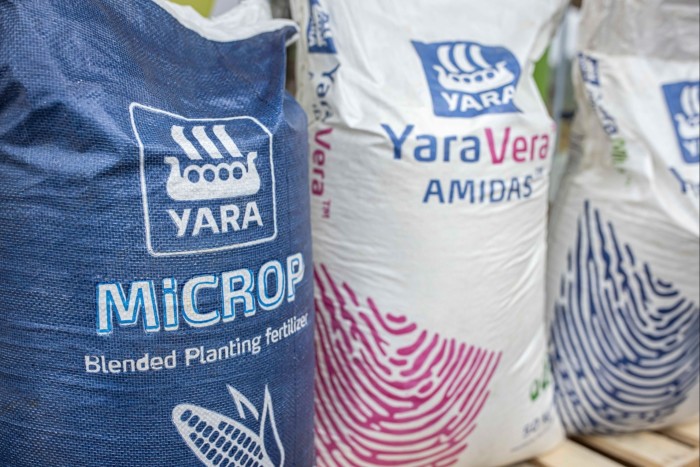
SM: And why is that?
STH: Many industries in Europe have been very focused on energy efficiency for a long time — and we’ve come far. Our sustainability focus has been in the business for a longer time — I think that’s the main thing. Also how we produce, and the competence levels throughout.
SM: So it’s fundamentally the energy efficiency that’s meant Europe is greener in its fertiliser production. But, presumably, in the future, if you can roll out carbon capture, utilisation and storage . . .
STH: Yes, then, we can go even further in that. And it’s also about the type of fertiliser we produce in Europe: it’s a more nitrates-based versus urea commodity. That kind of fertiliser behaves better in the field, on the farm, as well. So you have less infield emissions. It’s a double hit for Europe . . . and triple for the planet. For Europe it’s not losing important industry and it’s [having] access to advanced fertiliser. For the planet, it’s not shutting down more environmentally friendly fertiliser production and moving that out of Europe.
SM: What are the impacts of the [Ukraine] war and natural gas prices? What has that done to the fertiliser industry?
STH: It’s a huge impact and for many reasons. Natural gas is the most important component in producing fertiliser in Europe and 40 per cent of the natural gas comes from Russia. If that is shut off, then it creates incredible volatility in the market and also production issues for all of us. We’ve been having to flex operations up and down throughout this period. That’s the indirect impact.
The direct impact is that Russia is the world’s largest exporter of finished fertiliser and components to make fertiliser, like phosphate and potash. And, here, both Russia and Belarus are impacted by the same thing. For potash, 40 per cent of the world’s production is in Russia and Belarus — so that has an impact. And we also sourced a lot of our raw materials from Russia . . . even during the coldest part of the cold war these products came — the same with natural gas.
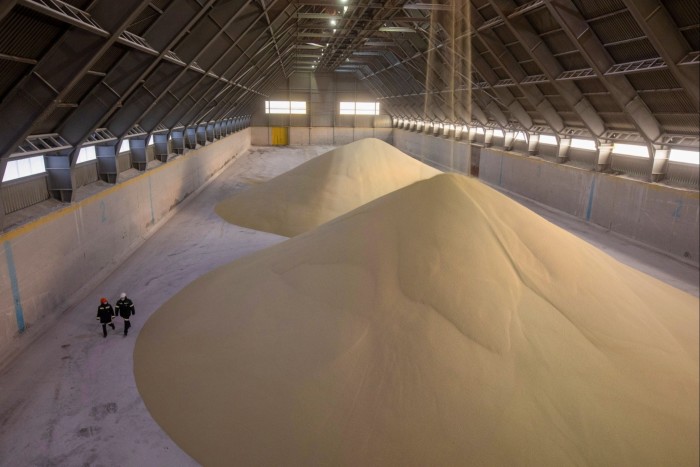
Now, with the benefit of hindsight, at what point should we have changed it? Should we have done it in 2007, when we started to change how we talked about Russia? Or in 2008 with [Russia’s invasion of] Georgia? Or 2014, with [Russia’s annexation of] Crimea?
It hasn’t been straightforward but, then, we get to a very sudden change. That changed all the logistics for classic production almost overnight, and that has created enormous volatility.
SM: What’s been the impact of all this on European households?
STH: Everyone has felt inflation across everything — from utility bills up to pretty much everything for households.
SM: But, when we look at the fertiliser space, in particular, is that really a big contributor to the inflation?
STH: It adds to it, and it makes food production more expensive. For farmers, it’s energy intensive to do farming. And they see it in the chemicals, they see it in seeds, everything is going up. And then [so are] food prices.
But what is [simply] a cost issue in Europe is a question of [either] having food or not in other parts of the world. The number of people facing acute hunger has doubled from 2019. In 2019, it was 175mn. Now, it’s 350mn.
SM: And, again, you would really link this closely with the fertiliser price?
STH: Yes — fertiliser but also food prices. Because Russia and Ukraine are food-producing superpowers as well, and you have impacts to the supply chains. This already started with Covid, where we saw there were fragile food systems — because we didn’t so much focus on producing kilos of crops rather than how robust [a supply chain] is if it’s put to the test. And we saw bottlenecks and impacts on the transportation.
Then we had the huge impact of the invasion where one food superpower attacked another one — and that shifts supplies, significantly.
And, on top of that again, you have climate. I was in Kenya in November together with some farmers. Coffee — at least, in that region — is a bit more resistant, so the coffee parts of their farms are doing well. But, also, they are planting maize as a staple food crop. But because of, first, drought, and, then, heavy rain, they have lost all their crops. Where there was supposed to be maize, there was nothing. And that’s a climate impact, so that plays into this.
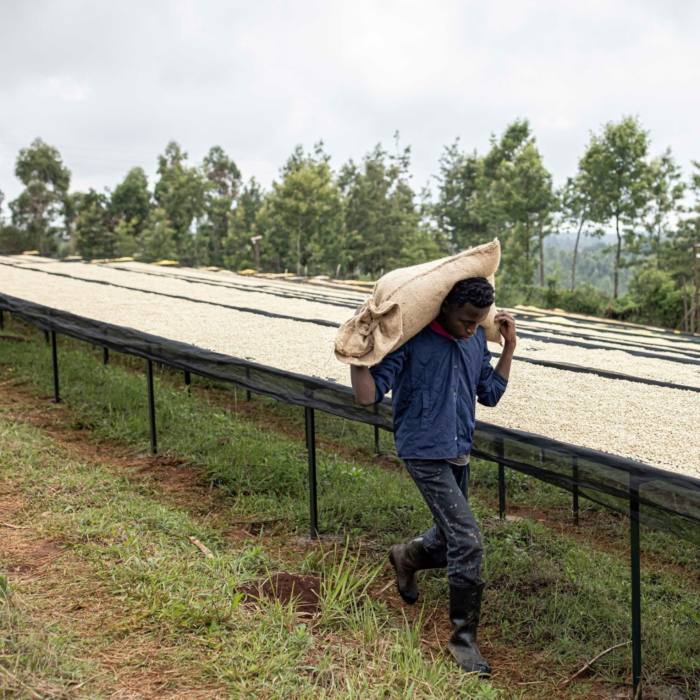
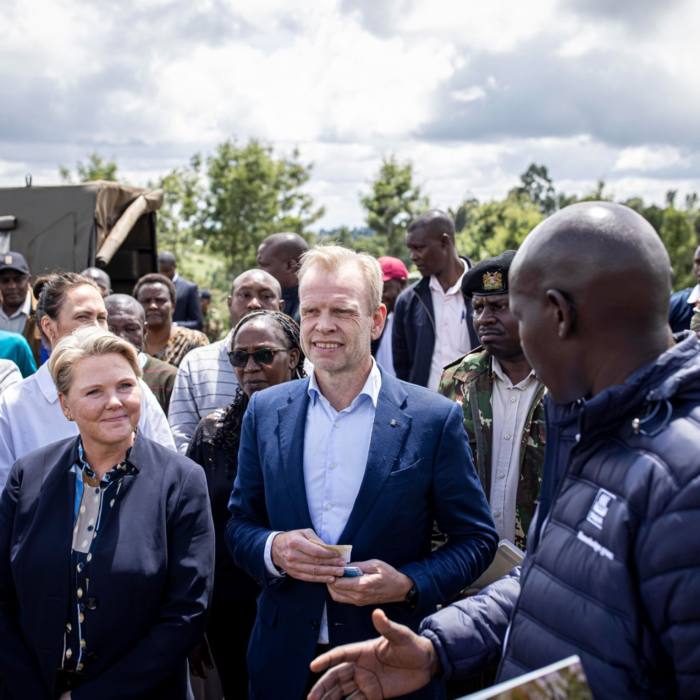
It is sort of a perfect storm for the whole food system right now: very challenging in Europe, of course, with higher prices; even worse in other parts of the world where a human being dies every four seconds as a result of hunger. Now we’re in 2023, it’s tragic and shouldn’t be like that. That should be a very strong reminder of the need to have a more robust food system — from a climate perspective, from a logistics perspective, but also from a political perspective.
If you look at the role that we have allowed Russia to have in global food supply, we depend on them. How did that happen? What kind of weapon is that? And Putin is weaponising food. This is not only a war fought with military weapons, it’s with energy — we see that impact clearly here in Europe, but it’s having an impact to the global energy crisis as well. And he’s weaponising food and fertiliser.
That is a major wake-up call . . . we cannot just slide back to that, even if there was peace tomorrow, or next month . . . how did we allow ourselves to be at the mercy of Putin for global food?
SM: So are you saying the first and most important way of fixing this in the long term is green hydrogen?
STH: That’s a very important part . . . We need to make that transition and an important element of that is green hydrogen, with a significant build-up of renewable energy. Then we can do two things at the same time: reduce emissions and reduce dependency on Russia for fossil fuels.
SM: So are you pursuing green hydrogen yourselves? Or is that really something that is not part of your plan?
STH: We do both, so we can produce green hydrogen and we can also source green hydrogen. That’s the beauty of the ammonia plants that we’re running. In essence, it has two steps. First, you produce hydrogen: with natural gas — we take out the carbon and that becomes CO₂. Then, we produce hydrogen in the next step. Or, we can just get green hydrogen straight into our facilities as well. So we do both.
SM: So you do have your own electrolysers?
STH: We’re building electrolysers.
SM: That’s in the Netherlands?
STH: It’s in Norway. In the Netherlands, we do carbon capture and storage. But we are doing a project together with Orsted, the Danish company, where they are producing green hydrogen and then we buy green hydrogen from them. So we are flexible. But our next step [is] an important business venture: that’s Yara clean ammonia.
If you want to transport green hydrogen, you can do that short distances through pipelines but you cannot do it very long distances.
SM: Why not?
STH: Because, first, it’s very expensive to get the pipelines and we cannot do those long distances. Hydrogen isn’t only a light molecule; it’s the lightest there is — so it wears on the pipelines as well. So if you want to [move it long] distances, then you have to ship it, but hydrogen is so light that you need to cool it down to -253C to make it liquid.
But if you add a nitrogen molecule, that nitrogen molecule holds three hydrogen molecules [in the form of ammonia] and holds it super tight. So it holds it together and it’s much more compressed — then you have much more energy per unit of volume and you can make it liquid at -33C instead. And here we have a shipping fleet that can transport ammonia from all across the world.
SM: You have your own shipping fleets?
STH: Yes, 12 ships ourselves. We are the largest ammonia trader in the world so, to take that hydrogen and move it over distances, we have a very interesting infrastructure to enable that — whether that is to use it as a shipping fuel or to help Japan on its journey to reduce coal consumption. For instance, you can use ammonia and substitute coal in coal-fired plants
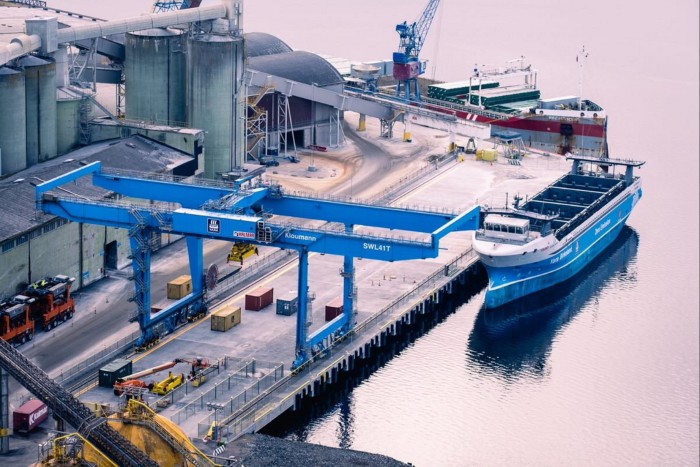
SM: Yes, I saw they’d been doing that, is that gathering steam, the Japanese ammonia?
STH: This is super interesting both for Japan but also for other parts of the world because it’s about utilising existing infrastructure and others being aware that these are massive ships. So, to the extent we can use infrastructure already there, we should do that. That’s the thinking in Japan, as well. They will do it first but it has an impact in other parts of the world, as well.
SM: So if we look at the state of play in Europe, it hasn’t done as much perhaps as the US has done through the IRA. But it hasn’t done nothing. How would you assess Europe’s progress when it comes to hydrogen and ammonia?
STH: Well, there are initial things that we need speed and clarity on, because it is quite a cumbersome process to apply for support [in Europe]. In the US . . . if you meet the requirements, then you know you have it. So it’s just some certainty around that.
Then, in order to produce clean hydrogen, you need massive amounts of renewable energy — and the speed at which that is being rolled out is much too slow in Europe. In my own home country of Norway, it’s not moving
at a speed near what is needed.
SM: So, fundamentally you’d want to see more tax credits? Or would you want to see more state-led investment?
STH: Probably a combination, especially in the renewable energy space . . . There need to be incentives for first movers here to get this going. And then we need to tackle the climate crisis, as well.
That’s what the US is perhaps understanding now: that if we delay this transition, the cost to deal with the climate crisis will increase exponentially. So, yes, it’s a lot of money but let’s do it now and get it done. And if companies make some money on that, fine — it’ll just make it even faster.
In Europe, we take a different approach where it’s much more into the details and long processes to qualify. Businesses need to take these decisions right now and that’s why we’re trying to communicate that right now.
Let’s not try to come up with something completely different. What the US is doing is here to stay. So, the best thing we can do is to fund the elements and see how can we find a structure that resembles that in Europe.
SM: Do you think Europe should be concerned about its food security?
STH: Yes. Not near term . . . there will be a shortage and there will be a global auction for food — but Europe is a wealthy part of the world.
But we need to think it through. If we’re not focused on producing the maximum amount of food within our planetary boundaries in Europe and we say that we’d rather pay more to get food into Europe, we’re buying that food away from someone else. And in terms of food and food security, when you have that, you see wars or mass migrations, extremism, all these things.
SM: And the same would go for fertiliser, presumably. If you’re importing it because you can’t produce enough domestically?
STH: Yes, it’s all connected. And that’s something that we need to be aware of. When we have some of the best farmers in the world, and some of the best businesses in the world, if we then choose to say “We’ll get someone else to do that on our behalf”, it sends a signal. And it’s the wrong signal. It creates other dependencies across the world — and for nations that cannot afford to speak up against what is happening in the world right now.